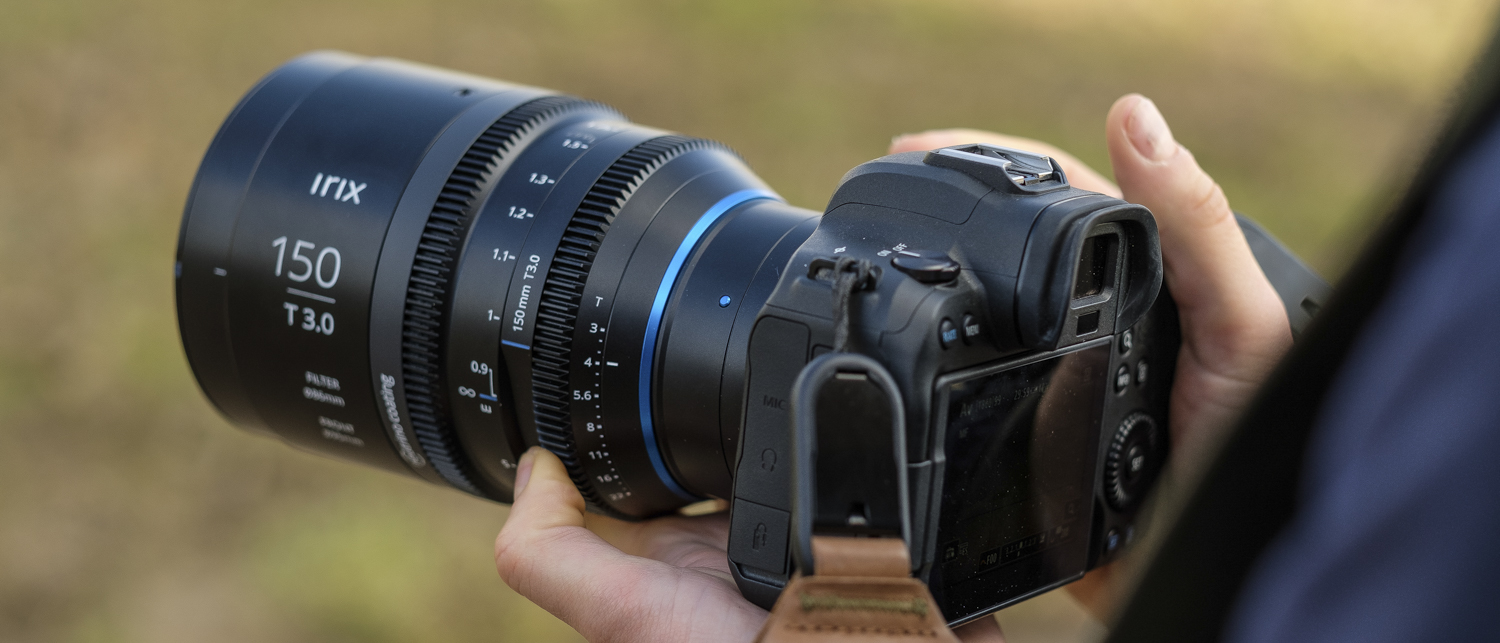Digital Camera World Verdict
The Irix Cine 150mm T3.0 Tele lens is ideal for amateur and professional moviemakers using a full-frame camera who want a longer focal length to work with. Its design is robust and attractive, yet heavy (though not particularly heavy for a cine lens) and its price is reasonable. Image quality is also pleasing, although sharpness isn't the best at T3. Irix isn't yet the most well-known brand in the cine lens market, but it could be if it continues to produce such stellar optics.
Pros
- +
Solid, weather-sealed design
- +
Tactile lens rings
- +
Sensible price
Cons
- -
Manual focus only
- -
Lens hood sold separately
- -
A bit heavy for handheld use
Why you can trust Digital Camera World
Irix is currently producing some of the best cine lenses for amateur and professional cinematographers. They balance capable performance with a competitive price, not to mention – in my opinion – a stunning design, too.
In 2019 Irix hit the cine market with a 150mm T3.0 1:1 Macro lens based on its successful photo lens of the same focal length (the Irix 150mm f/2.8 Macro 1:1 Dragonfly). The focal length and 1:1 Macro capability made this lens stand out, and while it has proved popular, many photographers wanted to be able to work at greater distances from their subjects.
• Find out how cine lens are different to regular lenses.
That's why Irix – seemingly valuing user feedback – has now developed a second version of the 150mm T3.0 lens with what it calls a "TELE designation". The lens is optically and mechanically similar to its older brother, but there are a few subtle differences. The focus range now starts from 0.67m and the maximum aperture is T22 instead of T32.
Available in the seven most popular industry mounts: Canon EF, Canon RF, Sony E, Nikon Z, Olympus MFT/ Panasonic MFT, and Arri PL-mount, Irix is aiming to appeal to a wide range of users.
But is this new lens a decent proposition for budding filmmakers and cinematographers? We tested a sample with the Canon RF mount and a Canon EOS R6. Let's see how it fares in real-world use.

Irix Cine Lens 150mm specifications
Lens Mount: Canon EF, Canon RF, Sony E, Nikon Z, Leica L, Olympus / Panasonic MFT, Arri PL-mount
Aperture range: T3.0 ~ T22
Dimensions (L x D): 159 x 97 mm (Canon RF mount)
Number of iris blades: 11 (rounded shape)
Minimum focusing distance: 0.67 m (2’19”)
Focus ring rotation angle: 270°
Front filter thread: 86 x 1.0 mm
Front diameter: 95 mm
Weight: 1.1kg
Irix Cine Lens 150mm features
Irix Cine 150mm T3.0 Tele lens is designed for UltraHD cinema cameras that resolve video in 8K. Inside the Irix Cine Lens 150mm, there are 11 rounded iris blades to produce a smooth, dreamy bokeh, and the optical system itself boasts 12 optical elements in 9 groups.
Like the Irix Cine 30mm T1.5, the optical construction has been designed so that the front element remains stationary during focusing. The advantage of this – particularly for a cine lens – is stability in weight throughout the focal range, as well as increased durability against dust and moisture.
There's a 270-degree precision focus ring and standard 0.8 follow focus rings that enable you to position your follow focus anywhere you like. Like the rest of the Cine line, it also features Irix' Magnetic Mount System that enables accessories like the lens hood (sadly not included) and Irix Edge filters to be quickly added and removed.
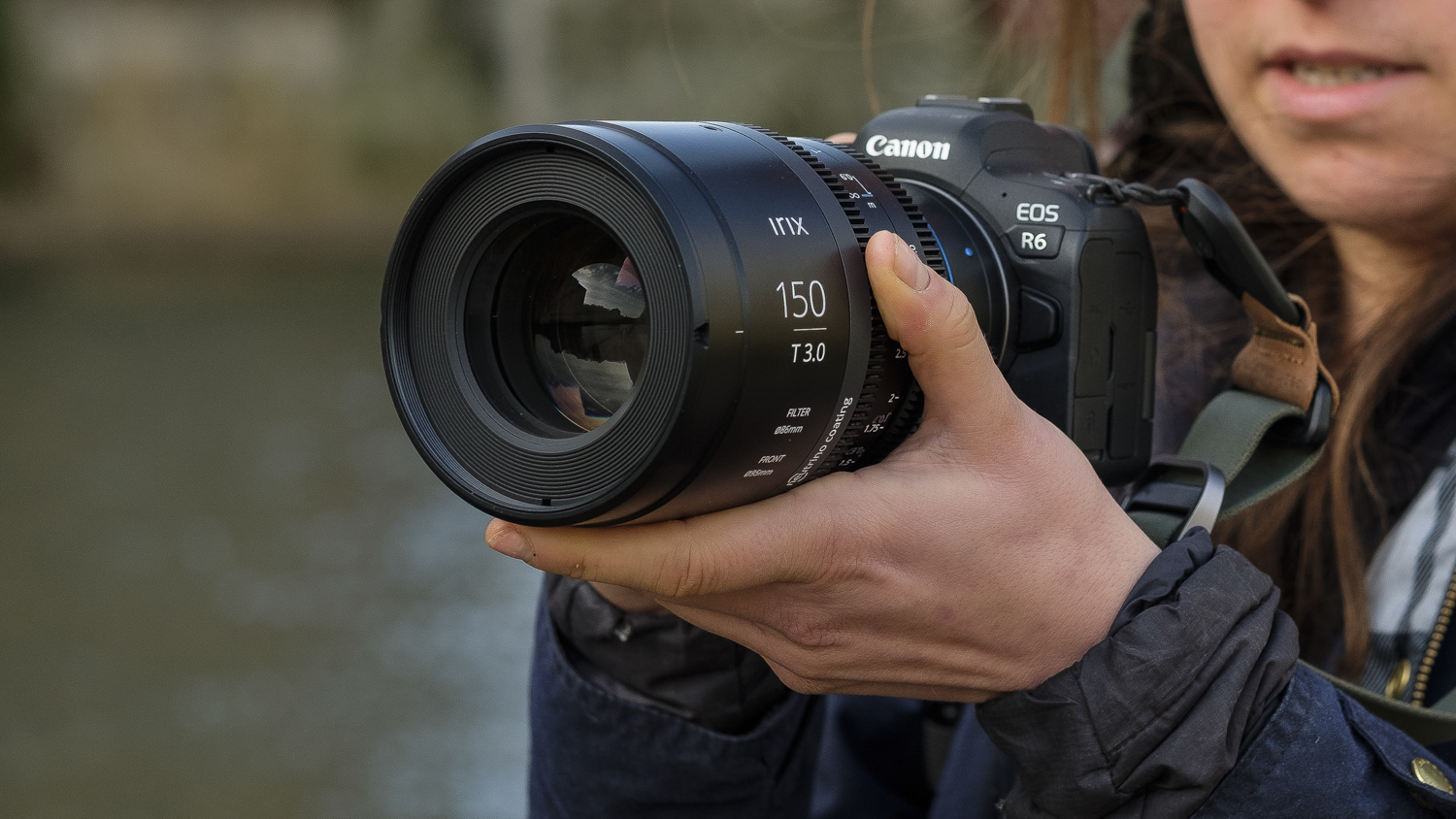
Irix Cine Lens 150mm Build & handling
The first thing you notice when you take the Irix Cine 150mm lens out of the box is its considerable heft and size. Its made from an aluminum and magnesium alloy that's smooth and robust, but at 1.1kg, it could never be called lightweight. Irix suggested that the lens works perfectly with gimbals and is suitable for handheld shooting, but I didn't feel very in control when doing the latter.
You'll get the best from the lens by mounting it on a video tripod, which keeps it locked in position and frees up your hands for tweaking the focus and aperture. One key feature of a cine lens is its ability to smoothly switch focus, and this Irix lens is fully manual focus, with an internal focusing mechanism via the geared rings and a de-clicked aperture ring.
In the box, you get a foot with a 1/4'' thread to allow for a variety of secure mounting options and what's helpful is that it can be mounted on either the upper or lower part of the lens.
On the lens barrel itself, there are two rings; one for the clearly-marked focus distances and the other for T-stops. Both are incredibly smooth in operation and should help filmmakers to get accurate and smoother focus pulls. Typical of the best cine lenses, the build is solid and weather-sealed, and I'd have no worries about using it in a rain shower.
What's particularly excellent about Irix' cine lens build quality is its lens markings, which here are engraved and filled with UV-reactive paint. I could still see the markings in low light, which made changing and checking values easy.
The lens' front filter thread is 86mm, and it supports follow focus rigs via built-in gears (119 total on the focus ring, 110 total on the aperture ring), as well as being compatible with a 95mm diameter Matte Box.

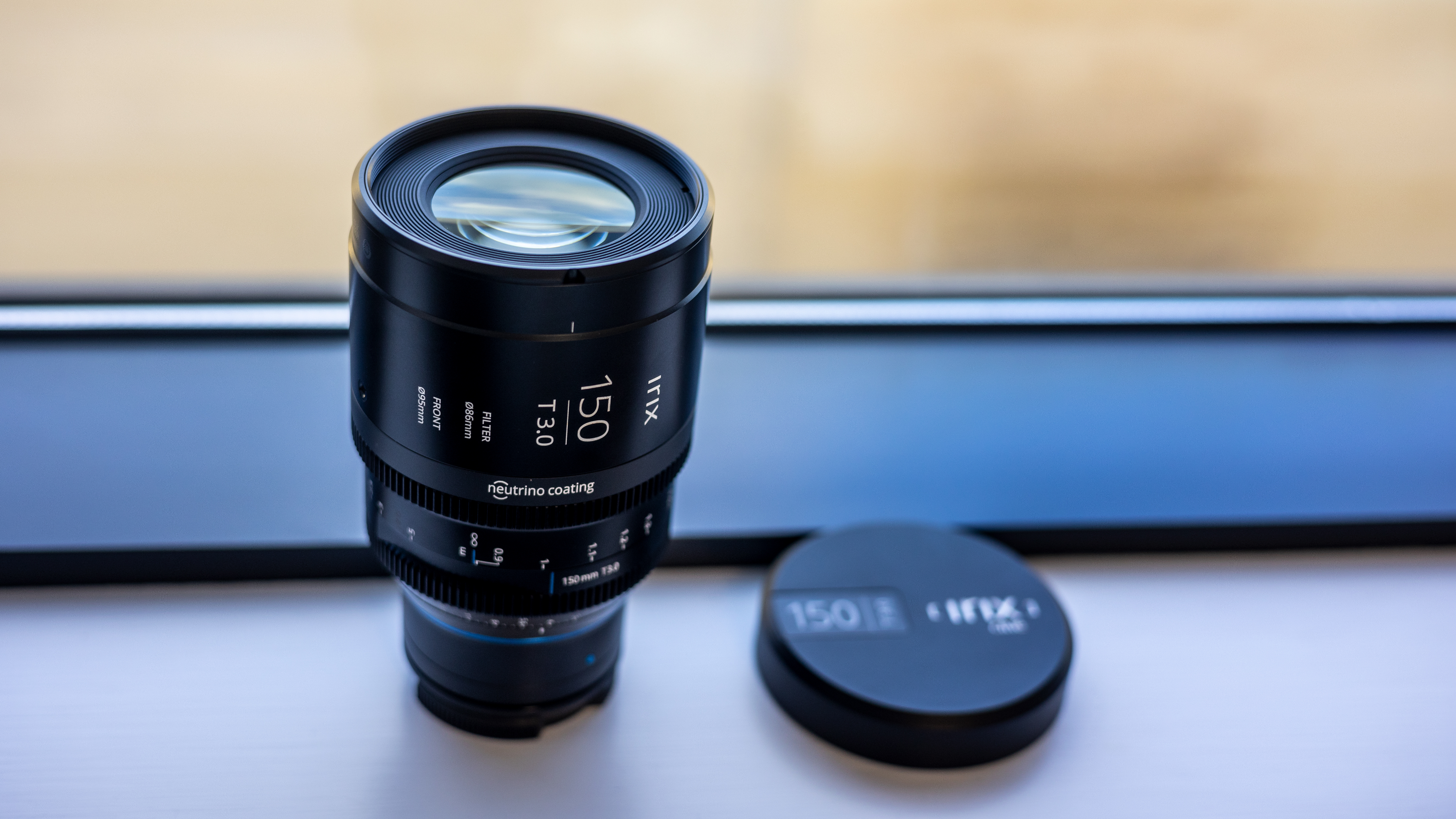
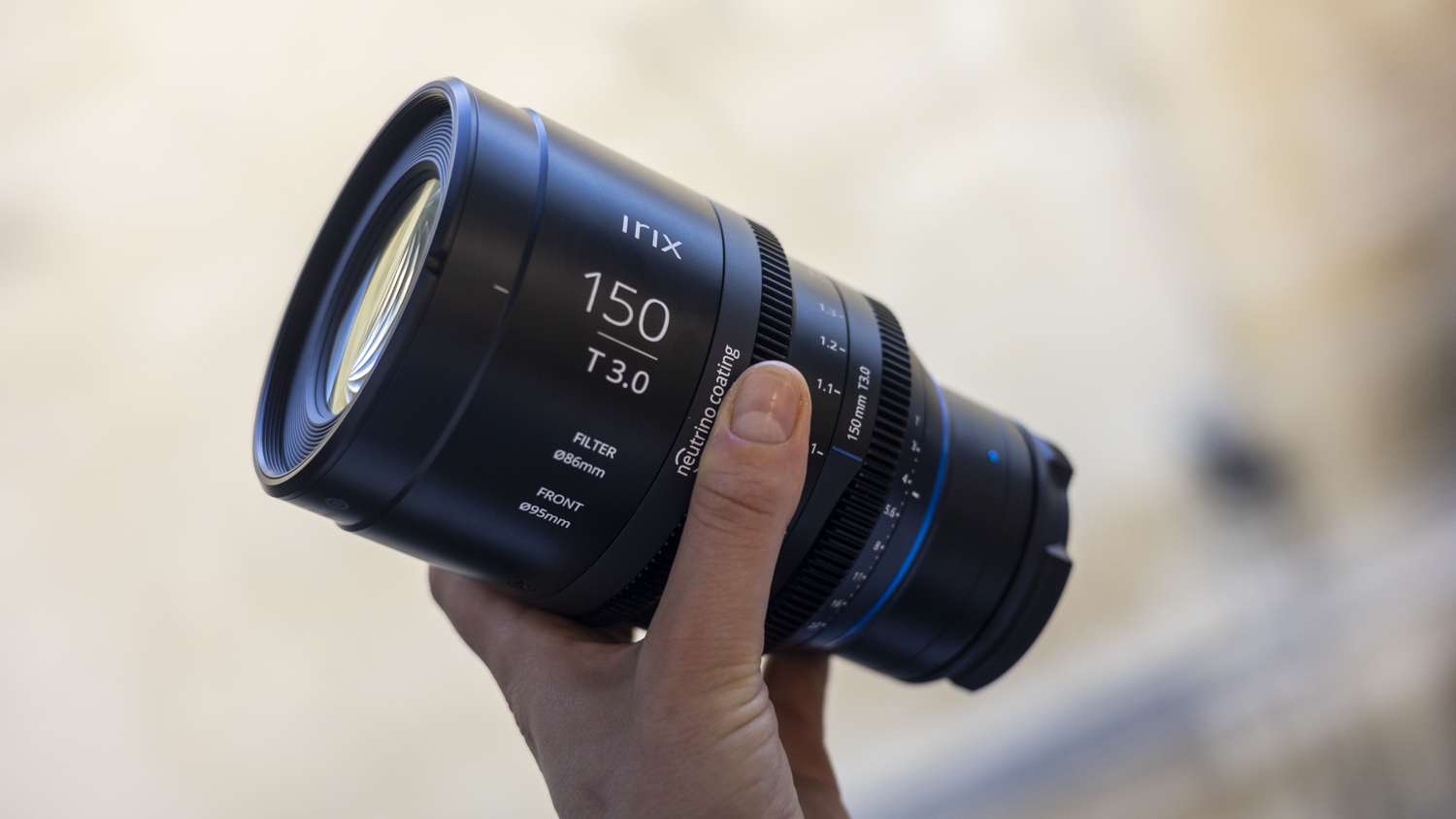
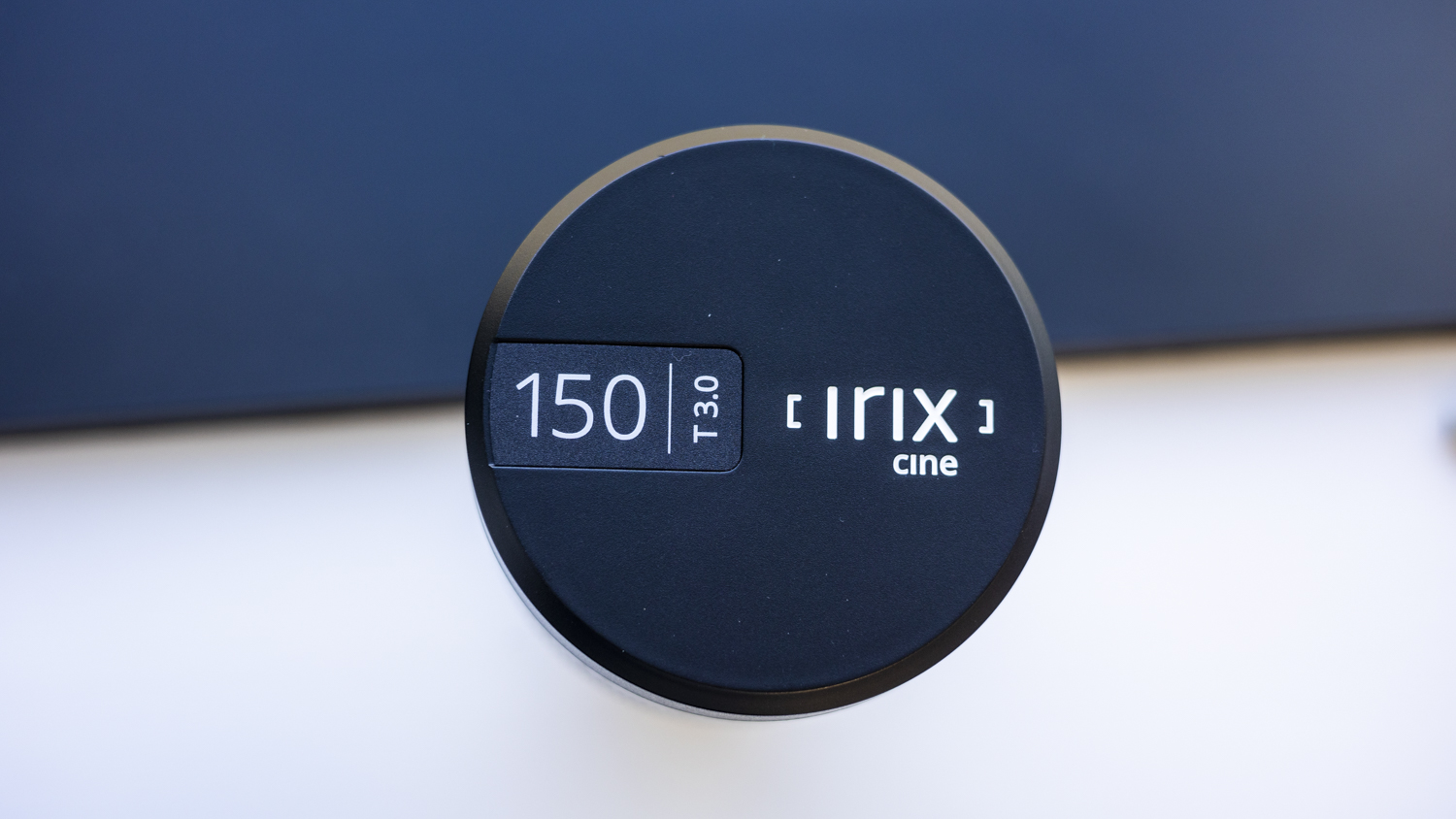
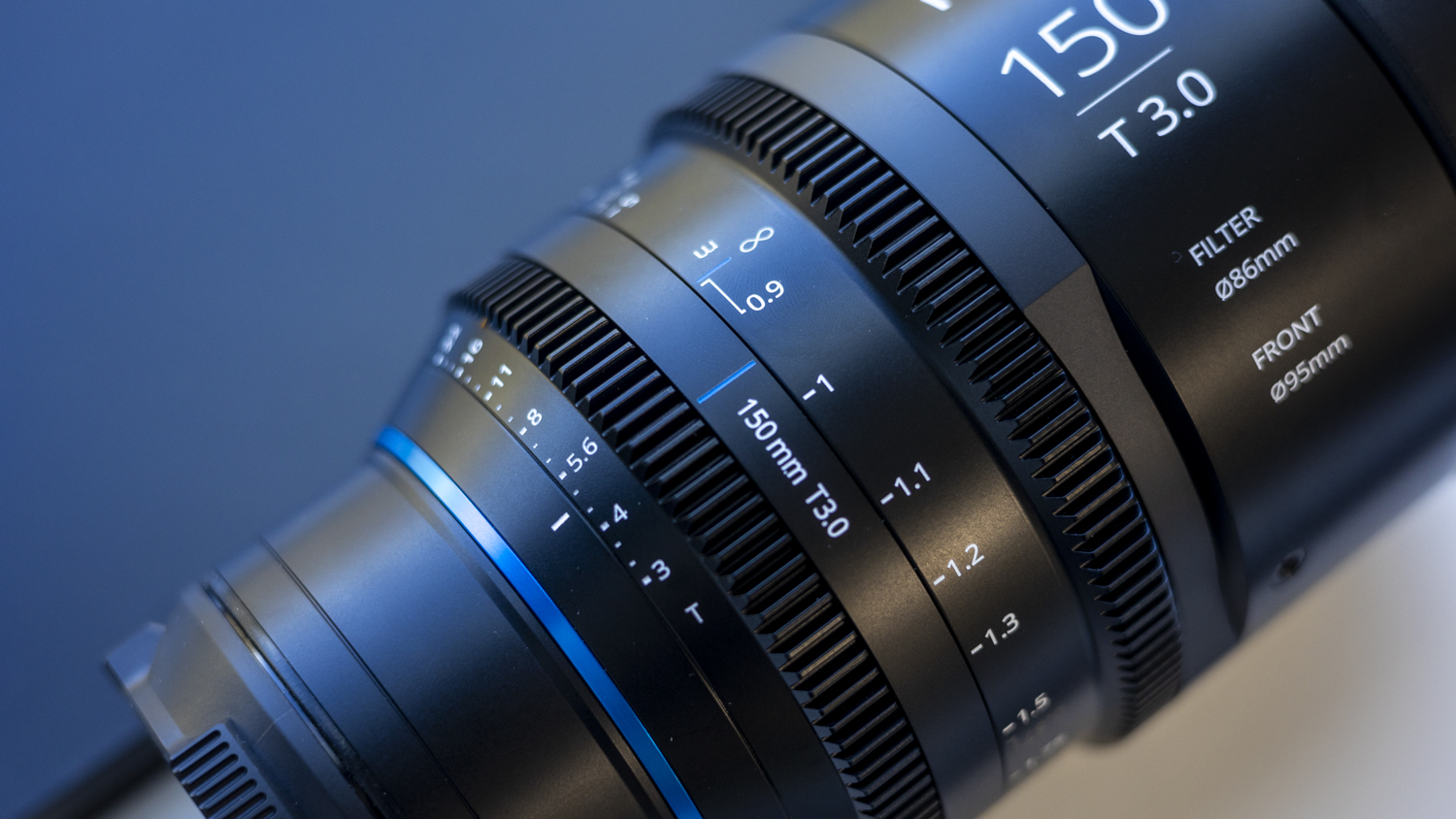

Irix Cine Lens 150mm performance
I'm still evaluating the Cine 150mm T3.0 Tele lens, but so far I don't have any major concerns about its optical performance. There's almost no distortion to speak of, which is pleasing but not too surprising – given that Irix claims "the lens is virtually free of geometric distortion" – and this is backed up by our lab tests below.
The visual characteristics of the lens are beautiful. The bokeh wide open can be a little noisy, but the lens generally renders backgrounds as a dreamy blur. What this Irix can render is reminiscent of far more expensive cine lenses – which is impressive when you consider it costs just $1,200.
There's also no noticeable focus breathing as the focusing distance changes, although my one complaint might be that the focus ring is a little stiff to move by hand. I'm sure the resistance is intentional, so that focus pulling is as smooth as possible, I just occasionally felt that turning the ring can be very awkward, given the weight of the lens.
Sample footage and frame grabs will follow very shortly.
Irix Cine Lens 150mm Lab results
We run a range of lab tests under controlled conditions, using the Imatest Master testing suite. Photos of test charts are taken across the range of apertures and zooms (where available), then analyzed for sharpness, distortion and chromatic aberrations.
We use Imatest SFR (spatial frequency response) charts and analysis software to plot lens resolution at the centre of the image frame, corners and mid-point distances, across the range of aperture settings and, with zoom lenses, at four different focal lengths. The tests also measure distortion and color fringing (chromatic aberration).
Sharpness:
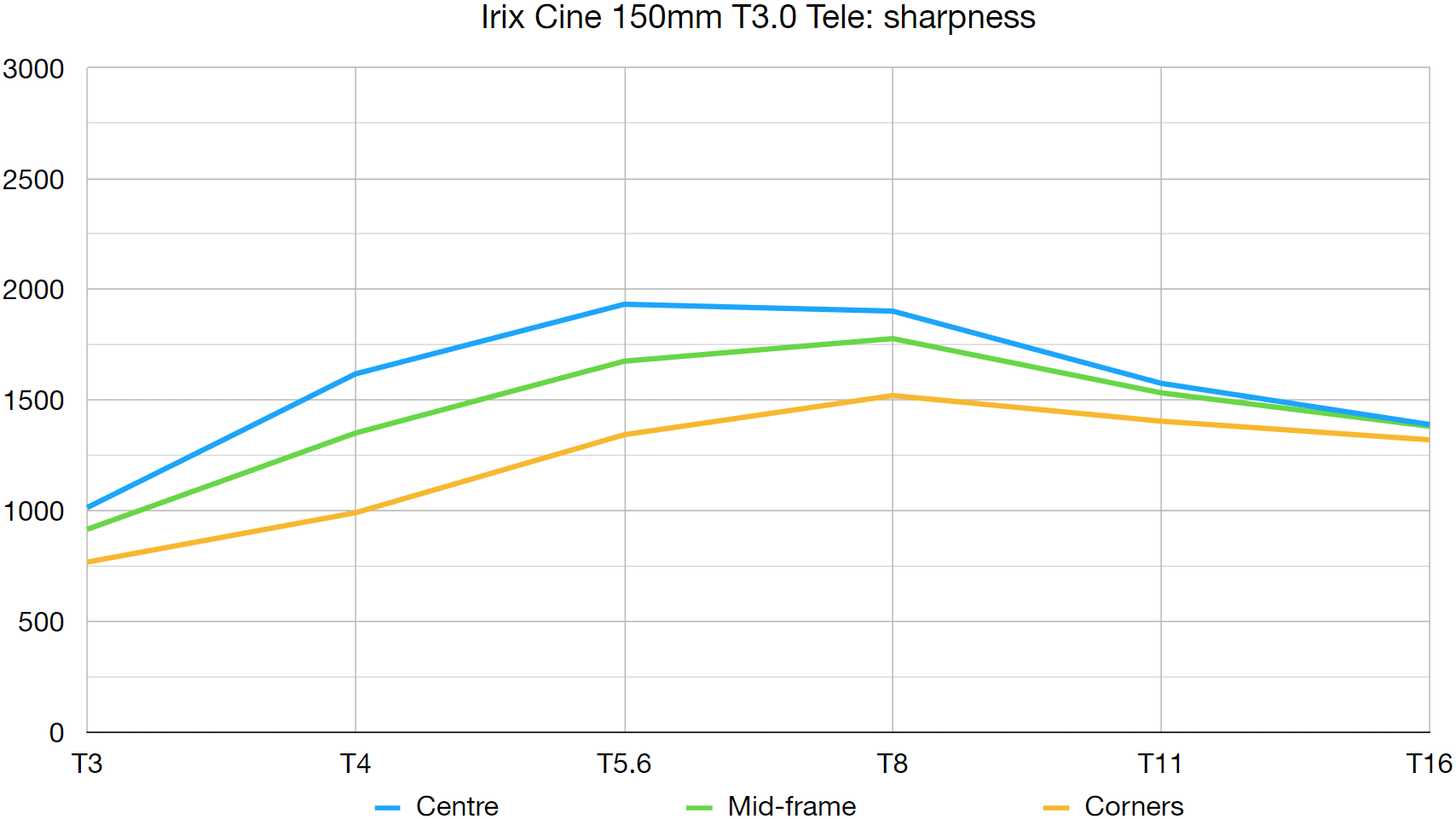
Sharpness wide open at T3 is mediocre at best, but stop down to T4 and the lens is significantly sharper in the central region, and sharpness becomes very respectable at T5.6.
Fringing:
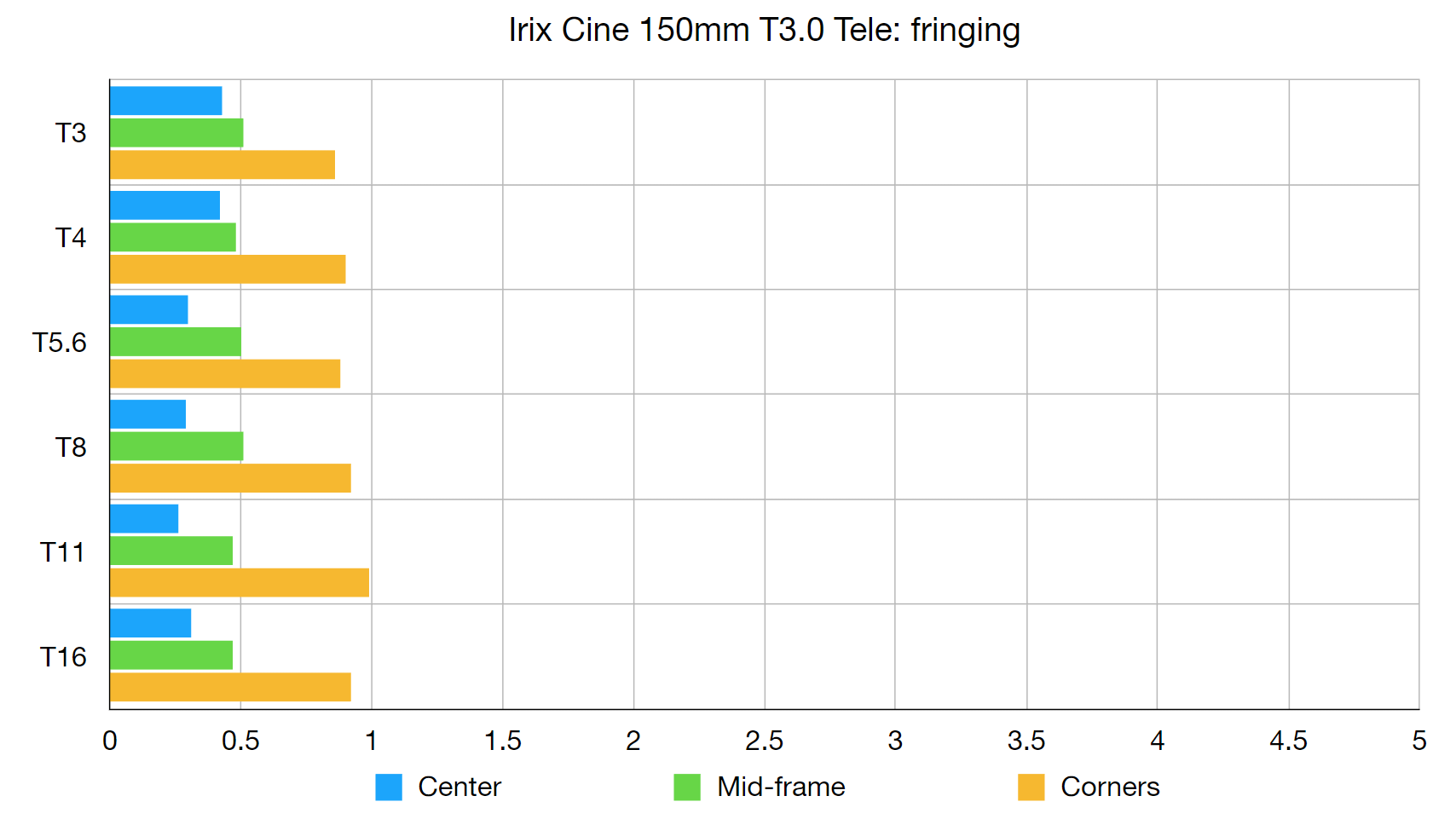
Color fringing is negligible at all aperture settings, even in the corners of frame where it would usually be most noticeable.
Distortion: -0.1
It’s virtually a zero-distortion lens. Technically, there’s the merest hint of barrel distortion but it’s practically impossible to spot in images.
Irix Cine Lens 150mm verdict
The Irix Cine 150mm T3.0 Tele lens is ideal for amateur and professional moviemakers using a full-frame camera who want a longer focal length to work with. Its design is robust and attractive, yet heavy (though not particularly heavy for a cine lens) and its price is reasonable.
Image quality is also excellent, although sharpness isn't the best wide open T3. Irix isn't yet the most well-known brand in the cine lens market, but it could be if it continues to produce such stellar optics.
If the Irix Cine Lens 150mm isn't for you

Lauren is a writer, reviewer, and photographer with ten years of experience in the camera industry. She's the former Managing Editor of Digital Camera World, and previously served as Editor of Digital Photographer magazine, Technique editor for PhotoPlus: The Canon Magazine, and Deputy Editor of our sister publication, Digital Camera Magazine. An experienced journalist and freelance photographer, Lauren also has bylines at Tech Radar, Space.com, Canon Europe, PCGamesN, T3, Stuff, and British Airways' in-flight magazine. When she's not testing gear for DCW, she's probably in the kitchen testing yet another new curry recipe or walking in the Cotswolds with her Flat-coated Retriever.
